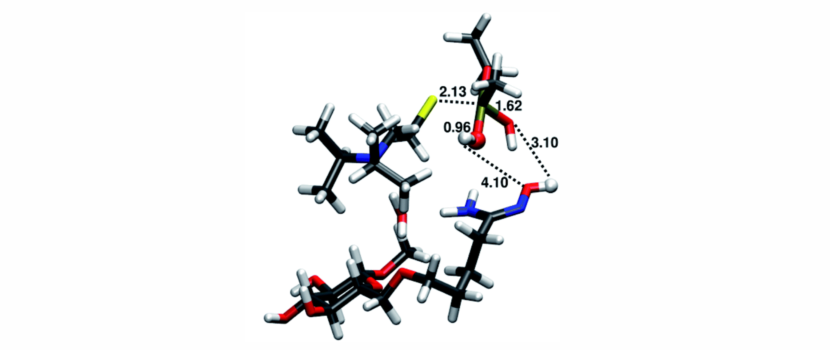
Destruction of toxic organophoshates using the bead cellulose
The RSC Advances journal (Royal Society of Chemistry) published recently an article describing the decomposition of toxic organophosphates with the aid of functionalized bead cellulose. In this paper, the team lead by Prof. Janos (Faculty of Environment) together with the scientists from the Faculty of Sciences, Institute of Inorganic Chemistry (AS CR), Military Research Institute in Brno and from the private company Iontosorb studied in detail the mechanisms of the cleavage of the phosphotriester bonds in parathion methyl (used here as a model organophosphate pesticide) and also in soman and VX agent as representatives of chemical warfare agents.
In fact, Prof. Janos and his team has been working on the destruction of organophosphate compounds for a long time, but only recently, they worked almost exclusively with so-called “reactive sorbents” which are derived from nanocrystalline metal oxides (titanium oxide, cerium oxide). Despite a great amount of experimental data, however, an exact description of the reaction mechanism(s) is still lacking. The attempts to use the pure theoretical approaches, such as computer modelling, to understand the mechanism have not been successful because of the enormous complexity of the metal-oxide systems. Therefore, a prototyped model system exploiting amidoxime-functionalized bead cellulose was used in this study, which allowed to use the methods of quantum mechanistics (QM) calculations to predict or verify the reaction pathways of the organophosphate decomposition. The computational simulations were performed mainly by Prof. Janos’ son (bearing the same name – Pavel Janoš, Jr.), the specialist in QM simulations and at present working in the International School for Advanced Studies (SISSA) in Trieste. This article is a good example of combining computational methods supported by experimental data. It should be noted that J. E. Purkyne University offers a very good infrastructure to facilitate such a multidisciplinary approach. The article also demonstrates that many common links can exist between different scientific disciplines, particularly, materials chemistry, mechanisms of organic reactions, heterogeneous catalysis and metalloenzyme activity.
P. Janos, O. Tokar, M. Dosek, K. Mazanec, P. Rysanek, M. Kormunda, J. Henych and P. Janos, Jr., Amidoxime-functionalized bead cellulose for the decomposition of highly toxic organophosphates. RSC Advances 11 (2021) 17976.
Link to the paper: https://doi.org/10.1039/D1RA01125A